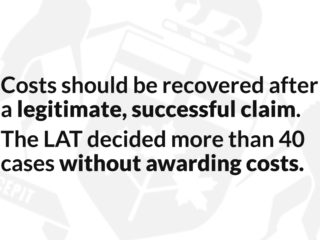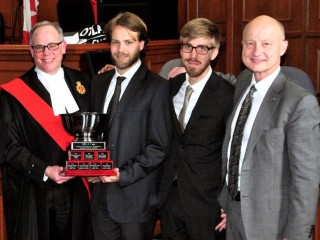An injured party and their family have a time limit within which to bring a lawsuit to get someone like Lawsuit Legal to recover damages or losses relating to an injury. The time limit for doing so in the Province of Ontario is usually 2 years from when the claim was discovered or reasonably discoverable (the “limitation period”). Many assume that claims are discovered (and the limitation period begins to run) when the injury occurs. In medical malpractice lawsuits, however, this is not always the case. Sometimes, patients or their families often do not become aware that the injury and accompanying losses were caused by negligent acts or omissions of the doctor(s) or other health care providers for quite some time. If you’re wondering ‘what is negligence?’, this article will help explain it to you. In truth, the underlying facts surrounding a medical error may be within the knowledge and expertise of the very medical practitioners involved in the negligent care. In such circumstances, it would be a tremendous hardship on plaintiffs injured by a medical error to be precluded from being able to pursue a lawsuit for medical malpractice just because they were unaware of the negligence when it happened or within 2 years of that date.
There has been some jurisprudence that addresses when the presumptive limitation period can be extended, which can be applied in the medical negligence context. Specifically, the law permits a limitation period to begin to run when the plaintiff discovers the underlying material facts for a cause of action or when the plaintiff ought to have discovered those facts by the exercise of reasonable diligence.
As such, the law sets out two essential elements to discoverability for the plaintiff:
- knowledge that someone erred, resulting in an injury, and
- whether the plaintiff acted diligently to discover the material facts giving rise to the error.
This is known as the “discoverability principle”.
Courts have made it clear that it is a fact-based analysis as to whether the plaintiff knows enough facts on which to base an allegation of negligence against the Defendant, such that it is “discoverable”. In some cases, Courts have held that the Plaintiffs only “discovered” the negligence giving rise to a claim after retaining legal counsel or after legal counsel has obtained an expert opinion that a doctor’s care is substandard.
It has been suggested that an adverse medical outcome is enough to trigger knowledge on the part of the Plaintiffs that there may be a right of action against the medical practitioners. However, in order to properly discover a cause of action in medical malpractice, the Plaintiff must know that she had suffered more than an unfortunate and unsatisfactory outcome. The party must know that she suffered a loss, have knowledge that someone might be responsible, know the identity of the wrongdoer and the nature of the culpable acts. In other words, to be aware of the medical error by the doctor, the following key knowledge is required of the Plaintiff, that is, knowing:
- something went wrong;
- why it was wrong; and
- who was responsible.
The limitation period does not begin to run just because of mere upset and suspicion after medical treatment.
A Plaintiff is not required to investigate or question every medical complication that arises to determine if a medical error occurred (in order to know when a limitation period starts to run). If that were the case, it would place too high a burden on Plaintiffs.
Generally speaking, it is difficult for patients to understand whether a doctor should or should not have conducted themselves in a particular way so as to avoid the outcome. Given the complexity of medical malpractice cases and the specialty knowledge of the medical profession, Plaintiffs may require advice of a medical doctor to discover whether the injury suffered was caused by the error of a doctor or another health care provider. As articulated by the Ontario Court of Appeal in Lawless v. Anderson (at paras. 23 and 24):
Determining whether a person has discovered a claim is a fact-based analysis. The question to be posed is whether the prospective plaintiff knows enough facts on which to base an allegation of negligence against the defendant. If the plaintiff does then the claim has been “discovered”, and the limitation begins to run…
In some medical malpractice cases, however, it has been recognized that in order to discover that they have a claim, plaintiffs may require advice from a person who is medically trained. Similarly, in some cases, plaintiffs will require access to their medical records and charts in order to become apprised of the facts necessary to discover their claim.
However, the Ontario Court of Appeal continues to accept that Plaintiffs cannot sit idle and not take any steps to investigate the circumstances of the injury.
Limitation periods are not enacted to be ignored.
The plaintiff is required to act with due diligence in acquiring facts in order to be fully apprised of the material facts upon which a negligence or malpractice claim can be based. This includes acting with diligence in requesting and receiving a medical opinion, if required, so as not to delay the commencement of the limitation period. In some cases, a medical opinion will be necessary to know whether to institute an action. In other cases, it will be possible to know material facts without a medical opinion, and the medical opinion itself will simply be required as evidence in the litigation. In the latter instances, the time of receipt of the medical opinion is immaterial to the commencement of the running of the limitation period.
Each case will vary depending on its circumstances, but a Plaintiff who asserts that they were not aware of all material facts to ground a claim of negligence against a doctor or health care provider may be entitled to extend the limitation date past the usual two-year period.
Further Reading:
Oakley v. Guirguis, 2014 ONSC 5007 (CanLII)
Johnson v. Studley, 2014 ONSC 1732, per Perrell J. at para. 55 citing Central trust Co. v. Rafuse, [1986] 2 S.C.R. 147 at p. 224
Thompson v. Zeldin 2008 CanLII 46703, per Master Glustein, at para 104.
Zurba v. Lakeridge Health Corp. [2010] O.J. No. 368, per Lauwers J. at para. 36; Soper v. Southcott [1998] OJ 2799, per Dunnet J. at para. 21
Debiasio Estate v. York Central Hospital [2012] O.J. No. 2401, per Donohue J. at para. 43
Longo v. MacLaren Art Centre, 2014 ONCA 526 (CanLII) at para. 42-44













